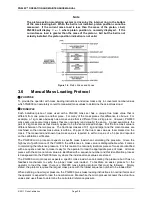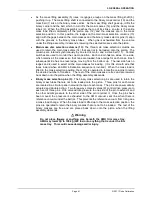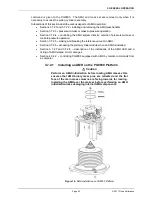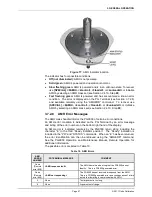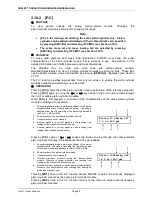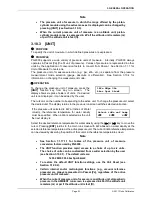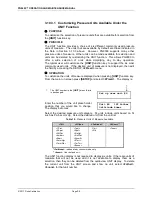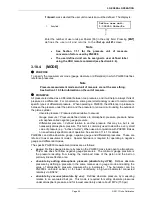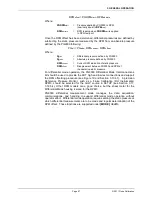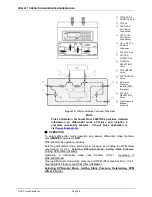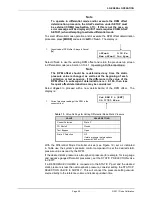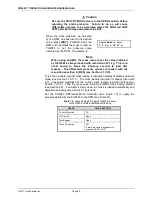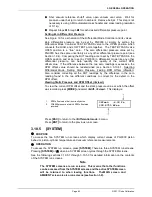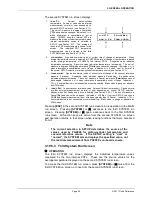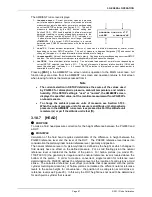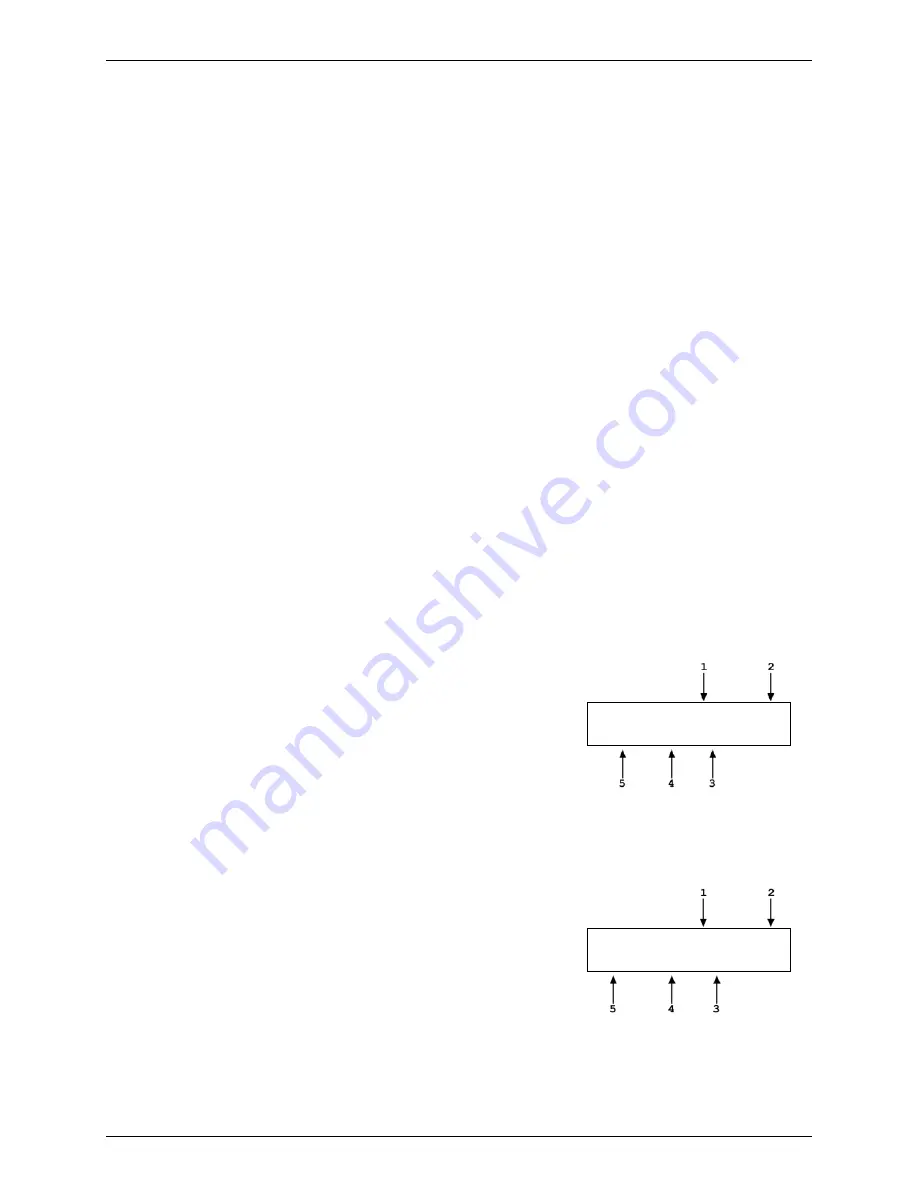
PG9602™ OPERATION AND MAINTENANCE MANUAL
© 2011 Fluke Calibration
Page
52
3.10.2 [P-C]
PURPOSE
To view and/or change the active piston-cylinder module.
Changing the
piston-cylinder module is equivalent to changing the range.
Note
•
[P-C] is for viewing and selecting the active piston-cylinder only. Piston-
cylinders can be added and deleted and their characteristics can be edited
by pressing [SPECIAL] and selecting <1PC/MS> (see Section 3.12.1).
•
The active mass set and mass loading bell are selected by pressing
[SPECIAL] and selecting <1PC/MS> (see Section 3.12.1).
PRINCIPLE
To make valid pressure and mass load calculations, PG9000 must know the exact
characteristics of the piston-cylinder module that is currently in use. See Section 7.2 for
detailed information on PG9000 pressure and mass calculations.
The
PG9602
may be
used with more than one piston-cylinder
module.
Detailed characteristics on up to 18 piston-cylinder modules are stored in files. These files
can be added, deleted, viewed and edited by pressing
[SPECIAL]
,
<1pc/ms>
(see Section
The P-C function provides rapid access, from any run screen, to viewing the piston-cylinder
modules available and selecting one to be active.
OPERATION
Pressing
[P-C]
shows the active piston-cylinder used in calculation of the reference pressure.
Pressing
[P-C]
again (or using the
[
←
]
or
[
→
]
keys while in the P-C function) steps through
the list of available piston-cylinder modules.
When
[P-C]
is first pressed, a summary of the characteristics of the active piston-cylinder
module is displayed, for example:
1.
Nominal pressure-to-mass conversion coefficient of the piston-
cylinder module that is currently selected (active). This value is
calculated from the effective area of the piston-cylinder and is
in kPa (if < 1 MPa) or MPa.
2.
Serial number of the active piston-cylinder module.
3.
Current pressure unit of measure.
4.
Nominal pressure in current pressure units resulting from
loading all the mass of the active mass set.
5.
Nominal pressure in current pressure units resulting from
loading the piston and mass bell only.
Active 10 kPa/kg 247
1.9 to 145 psi
Pressing
[P-C]
again or
[
←
]
/
[
→
]
causes the screen to step through the other available
piston-cylinder modules in the sequence that they were added.
1.
Nominal pressure-to-mass conversion coefficient of the piston-
cylinder module. This value is calculated from the effective area
of the piston-cylinder and is always in kPa (if < MPa) or MPa.
2.
Serial number of the piston-cylinder module.
3.
Current pressure unit of measure.
4.
Nominal maximum pressure using the piston-cylinder
module. Pressure, in current pressure units, resulting from
loading all the mass of the active mass set.
5.
Nominal minimum pressure using the piston-cylinder module.
Pressure, in current pressure units, resulting from loading the
piston and mass bell only.
Select 100kPa/kg 382
14.5 to 1450 psi
Pressing
[ENT]
while in the P-C function causes PG9000 to select the currently displayed
piston-cylinder module as the active piston-cylinder module.
Pressing
[ESC]
while in the P-C function returns to the main run screen without changing
piston-cylinder modules.
Summary of Contents for PG9000 Series
Page 10: ...PG9602 OPERATION AND MAINTENANCE MANUAL 2011 Fluke Calibration Page X Notes...
Page 128: ...PG9602 OPERATION AND MAINTENANCE MANUAL 2011 Fluke Calibration Page 118 Notes...
Page 164: ...PG9602 OPERATION AND MAINTENANCE MANUAL 2011 Fluke Calibration Page 154 Notes...
Page 188: ...PG9602 OPERATION AND MAINTENANCE MANUAL 2011 Fluke Calibration Page 178 Notes...
Page 192: ...PG9602 OPERATION AND MAINTENANCE MANUAL 2011 Fluke Calibration Page 182 Notes...

